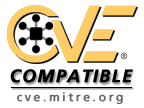Blind SQL Injection |
| Attack Pattern ID: 7 (Detailed Attack Pattern Completeness: Complete) | Typical Severity: High | Status: Draft |
Summary
Blind SQL Injection results from an insufficient mitigation for SQL Injection. Although suppressing database error messages are considered best practice, the suppression alone is not sufficient to prevent SQL Injection. Blind SQL Injection is a form of SQL Injection that overcomes the lack of error messages. Without the error messages that facilitate SQL Injection, the attacker constructs input strings that probe the target through simple Boolean SQL expressions. The attacker can determine if the syntax and structure of the injection was successful based on whether the query was executed or not. Applied iteratively, the attacker determines how and where the target is vulnerable to SQL Injection.
For example, an attacker may try entering something like "username' AND 1=1; --" in an input field. If the result is the same as when the attacker entered "username" in the field, then the attacker knows that the application is vulnerable to SQL Injection. The attacker can then ask yes/no questions from the database server to extract information from it. For example, the attacker can extract table names from a database using the following types of queries:
Attack Execution Flow
Hypothesize SQL queries in application:
Generated hypotheses regarding the SQL queries in an application. For example, the attacker may hypothesize that his input is passed directly into a query that looks like:
"SELECT * FROM orders WHERE ordernum = _____"or"SELECT * FROM orders WHERE ordernum IN (_____)"or"SELECT * FROM orders WHERE ordernum in (_____) ORDER BY _____"Of course, there are many other possibilities.
Attack Step Techniques
ID Attack Step Technique Description Environments 1 Research types of SQL queries and determine which ones could be used at various places in an application.
env-AllDetermine how to inject information into the queries:
Determine how to inject information into the queries from the previous step such that the injection does not impact their logic. For example, the following are possible injections for those queries:
"5' OR 1=1; --"and"5) OR 1=1; --"and"ordernum DESC; --"Attack Step Techniques
ID Attack Step Technique Description Environments 1 Add clauses to the SQL queries such that the query logic does not change.
env-All2 Add delays to the SQL queries in case server does not provide clear error messages (e.g. WAITFOR DELAY '0:0:10' in SQL Server or BENCHMARK(1000000000,MD5(1) in MySQL). If these can be injected into the queries, then the length of time that the server takes to respond reveals whether the query is injectable or not.
env-AllOutcomes
ID type Outcome Description 1 Success At least one way to complete a hypothesized SQL query that would violate the application developer's assumptions.
Determine user-controllable input susceptible to injection:
Determine the user-controllable input susceptible to injection. For each user-controllable input that the attacker suspects is vulnerable to SQL injection, attempt to inject the values determined in the previous step. If an error does not occur, then the attacker knows that the SQL injection was successful.
Attack Step Techniques
ID Attack Step Technique Description Environments 1 Use web browser to inject input through text fields or through HTTP GET parameters.
env-Web2 Use a web application debugging tool such as Tamper Data, TamperIE, WebScarab,etc. to modify HTTP POST parameters, hidden fields, non-freeform fields, etc.
env-Web3 Use network-level packet injection tools such as netcat to inject input
env-Web env-ClientServer env-Peer2Peer env-CommProtocol4 Use modified client (modified by reverse engineering) to inject input.
env-ClientServer env-Peer2Peer env-CommProtocolIndicators
ID type Indicator Description Environments 1 Positive Attacker receives normal response from server.
env-Web env-ClientServer env-Peer2Peer env-CommProtocol2 Positive Response takes expected amount of time after delay is injected.
env-Web env-ClientServer env-Peer2Peer env-CommProtocol3 Negative Server sends a specific error message that indicates programmatic parsing of the input data (e.g. NumberFormatException)
env-Web env-ClientServer env-Peer2Peer env-CommProtocolOutcomes
ID type Outcome Description 1 Success At least one user-controllable input susceptible to injection found.2 Failure No user-controllable input susceptible to injection found.Security Controls
ID type Security Control Description 1 Detective Unusual queries such as the ones described in the previous step, in application logs. Log files may contain unusual messages such as "User bob' OR 1=1; -- logged in". Operators should be alerted when such SQL commands appear in the logs.2 Preventative Input validation of user-controlled data before including it in a SQL query3 Preventative Use APIs that help mitigate SQL injection (such as PreparedStatement in Java)Determine database type:
Determines the type of the database, such as MS SQL Server or Oracle or MySQL, using logical conditions as part of the injected queries
Attack Step Techniques
ID Attack Step Technique Description Environments 1 Try injecting a string containing char(0x31)=char(0x31) (this evaluates to 1=1 in SQL Server only)
env-Web env-ClientServer env-Peer2Peer env-CommProtocol2 Try injecting a string containing 0x313D31 (this evaluates to 1=1 in MySQL only)
env-Web env-ClientServer env-Peer2Peer env-CommProtocol3 SecurityDatabase\Alert\Inject other database-specific commands into input fields susceptible to SQL Injection. The attacker can determine the type of database that is running by checking whether the query executed successfully or not (i.e. wheter the attacker received a normal response from the server or not).
env-Web env-ClientServer env-Peer2Peer env-CommProtocolIndicators
ID type Indicator Description Environments 1 Positive Success outcome in previous step
env-Web env-ClientServer env-Peer2Peer env-CommProtocol2 Negative Failure outcome in previous step
env-Web env-ClientServer env-Peer2Peer env-CommProtocolOutcomes
ID type Outcome Description 1 Success Database platform in use discovered.2 Failure Database platform in use not discovered.
Extract information about database schema:
Extract information about database schema by getting the database to answer yes/no questions about the schema.
Attack Step Techniques
ID Attack Step Technique Description Environments 1 Automatically extract database schema using a tool such as Absinthe.
env-Web2 Manually perform the blind SQL Injection to extract desired information about the database schema.
env-Web env-ClientServer env-Peer2Peer env-CommProtocolIndicators
ID type Indicator Description Environments 1 Positive Success outcome in previous step.
env-Web env-ClientServer env-Peer2Peer env-CommProtocol2 Negative Failure outcome in previous step.
env-Web env-ClientServer env-Peer2Peer env-CommProtocolOutcomes
ID type Outcome Description 1 Success Desired information about database schema extracted.2 Failure Desired information about database schema could not be extracted.Security Controls
ID type Security Control Description 1 Detective Large number of unusual queries in database logs.Exploit SQL Injection vulnerability:
Use the information obtained in the previous steps to successfully inject the database in order to bypass checks or modify, add, retrieve or delete data from the database
Attack Step Techniques
ID Attack Step Technique Description Environments 1 Use information about how to inject commands into SQL queries as well as information about the database schema to execute attacks such as dropping tables, inserting records, etc.
env-Web env-ClientServer env-Peer2Peer env-CommProtocolIndicators
ID type Indicator Description Environments 1 Positive Success outcome in previous step.
env-Web env-ClientServer env-Peer2Peer env-CommProtocol2 Negative Failure outcome in previous step.
env-Web env-ClientServer env-Peer2Peer env-CommProtocolOutcomes
ID type Outcome Description 1 Success Attacker achieves goal of unauthorized system access, denial of service, etc.2 Failure Attacker cannot exploit the information gathered by blind SQL Injection
SQL queries used by the application to store, retrieve or modify data.
User-controllable input that is not properly validated by the application as part of SQL queries.
Description
In the PHP application TimeSheet 1.1, an attacker can successfully retrieve username and password hashes from the database using Blind SQL Injection. If the attacker is aware of the local path structure, the attacker can also remotely execute arbitrary code and write the output of the injected queries to the local path. Blind SQL Injection is possible since the application does not properly sanitize the $_POST['username'] variable in the login.php file.
Related Vulnerabilities
CVE-2006-4705
Skill or Knowledge Level: Medium
Determining the database type and version, as well as the right number and type of parameters to the query being injected in the absence of error messages requires greater skill than reverse-engineering database error messages.
In order to determine the right syntax for the query to inject, the attacker tries to determine the right number of parameters to the query and their types. This is achieved by formulating conditions that result in a true/false answer from the database. If the logical condition is true, the database will execute the rest of the query. If not, a custom error page or a default page is returned. Another approach is to ask such true/false questions of the database and note the response times to a query with a logically true condition and one with a false condition.
The only indicators of successful Blind SQL Injection are the application or database logs that show similar queries with slightly differing logical conditions that increase in complexity over time. However, this requires extensive logging as well as knowledge of the queries that can be used to perform such injection and return meaningful information from the database.
Security by Obscurity is not a solution to preventing SQL Injection. Rather than suppress error messages and exceptions, the application must handle them gracefully, returning either a custom error page or redirecting the user to a default page, without revealing any information about the database or the application internals.
Strong input validation - All user-controllable input must be validated and filtered for illegal characters as well as SQL content. Keywords such as UNION, SELECT or INSERT must be filtered in addition to characters such as a single-quote(') or SQL-comments (--) based on the context in which they appear.
The injected SQL statements are such that they result in a true/false query to the database. If the database evaluates a statement to be logically true, it responds with the requested data. If the condition is evaluated to be logically false, an error is returned. The attacker modifies the boolean condition each time to gain information from the database.
| CWE-ID | Weakness Name | Weakness Relationship Type |
|---|---|---|
| 89 | Improper Sanitization of Special Elements used in an SQL Command ('SQL Injection') | Targeted |
| 209 | Information Exposure Through an Error Message | Targeted |
| 74 | Failure to Sanitize Data into a Different Plane ('Injection') | Secondary |
| 20 | Improper Input Validation | Secondary |
| 390 | Detection of Error Condition Without Action | Secondary |
| 697 | Insufficient Comparison | Secondary |
| 713 | OWASP Top Ten 2007 Category A2 - Injection Flaws | Secondary |
| 707 | Improper Enforcement of Message or Data Structure | Secondary |
| Nature | Type | ID | Name | Description | View(s) this relationship pertains to |
|---|---|---|---|---|---|
| CanPrecede |  Attack Pattern Attack Pattern | 66 | SQL Injection | Mechanism of Attack1000 | |
| ChildOf |  Attack Pattern Attack Pattern | 66 | SQL Injection | Mechanism of Attack (primary)1000 | |
| ParentOf |  Attack Pattern Attack Pattern | 110 | SQL Injection through SOAP Parameter Tampering | Mechanism of Attack (primary)1000 |
Custom error pages must be used to handle exceptions such that they do not reveal any information about the architecture of the application or the database.
Special characters in user-controllable input must be escaped before use by the application.
Employ application-level safeguards to filter data and handle exceptions gracefully.
Never Use Input as Part of a Directive to any Internal Component
Handle All Errors Safely
| Submissions | ||||
|---|---|---|---|---|
| Submitter | Date | Comments | ||
| Chiradeep B Chhaya | 2007-02-22 | Third Draft - Revised to schema v1.4 | ||
| Modifications | |||||
|---|---|---|---|---|---|
| Modifier | Organization | Date | Comments | ||
| Malik Hamro | Cigital, Inc | 2007-02-27 | Reformat to new schema and review | ||
| Sean Barnum | Cigital, Inc | 2007-03-05 | Review and revise | ||
| Richard Struse | VOXEM, Inc | 2007-03-26 | Review and feedback leading to changes in Description, Attack Prerequisites and Related Attack Patterns | ||
| Sean Barnum | Cigital, Inc | 2007-04-13 | Modified pattern content according to review and feedback | ||
| Amit Sethi | Cigital, Inc. | 2007-10-29 | Added extended Attack Execution Flow | ||





